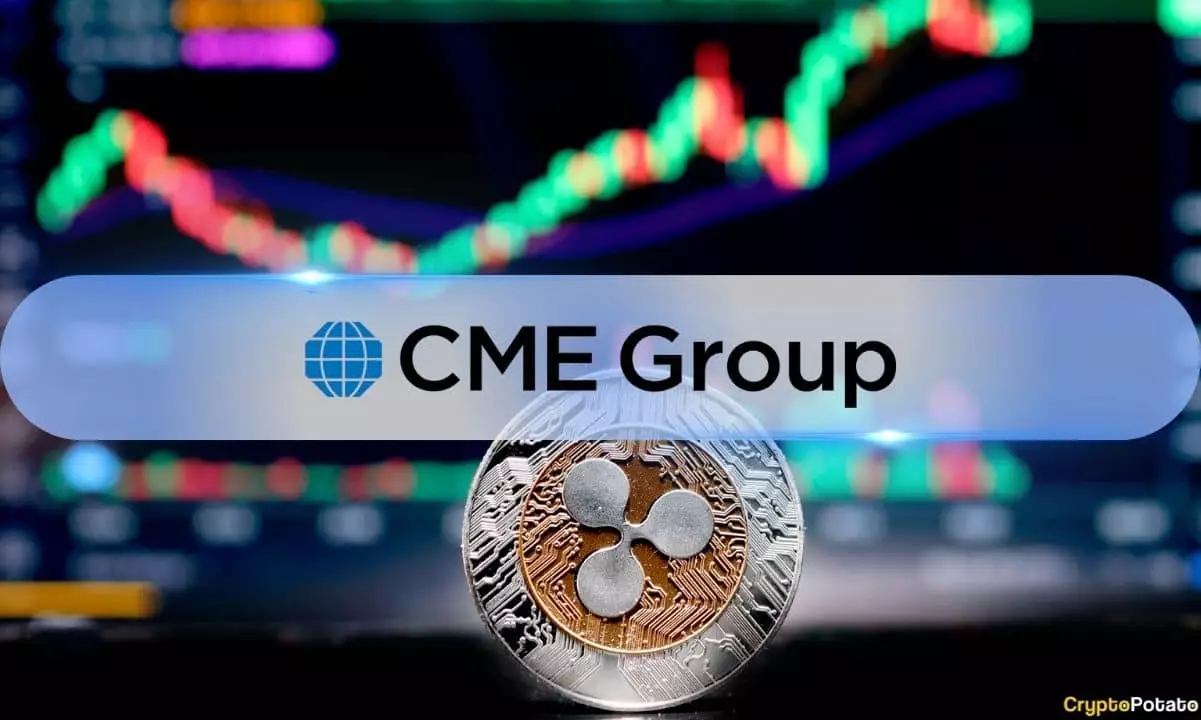The Chicago Mercantile Exchange (CME) is set to make waves in the cryptocurrency world by introducing XRP futures contracts on May 19. This decision reflects a broader trend of institutional interest in cryptocurrencies, adding to the already vibrant futures market that includes Bitcoin, Ethereum, and Solana. With XRP’s tech being rooted in facilitating cross-border payments, the CME is banking on the potential of Ripple, the company behind XRP, to achieve mainstream adoption. However, as isolated as it might seem, the implications of this launch extend far beyond just numbers on a trading screen.
The Design of XRP Futures: An Overview
The new XRP futures contracts will offer traders an innovative way to engage with the market without having to own XRP outright. They are cash-settled, meaning that once a position is closed, the trader receives cash based on the final price of XRP, thus eliminating the need for a digital wallet. The contracts come in two sizes—standard and micro—to cater to various trading appetites. The standard contract covers 50,000 tokens, while the micro variant covers 2,500 tokens. This dual-option framework serves to democratize access to the market, allowing both institutional giants and retail traders to participate in a manner that suits their risk profiles.
Yet, these sophisticated products can cloak peril beneath their seemingly attractive surface. First, while they facilitate ease of trading, their complexity may leave unsophisticated traders vulnerable to steep trading losses if they misjudge market movements. Furthermore, the various fee structures based on participant type can create a hidden barrier; non-members face significantly higher costs, which could dissuade smaller traders from engaging in such options.
Legal Drama and Market Reaction
Compounding the excitement around these new futures is the ongoing legal saga involving Ripple and the U.S. Securities and Exchange Commission (SEC). Just days before the futures launch, Judge Analisa Torres declined a motion for a settlement that would have put an end to a years-long legal dispute between the two parties. This decision is significant; it shows that despite regulatory uncertainty, institutions are moving forward with XRP futures. The judge’s prior indication that the programmatic sale of XRP does not qualify as a security offering offers a glimmer of hope for Ripple enthusiasts.
However, market reactions paint a contrasting picture. The price of XRP barely flinched in response to the news, showcasing a troubling trend often seen in the crypto markets: muted reaction to monumental developments. Despite an impressive 12.1% gain over the past month leading up to the futures rollout, XRP’s recent dips of 1.3% in 24 hours and 2.6% over seven days suggest that investor confidence is shaky at best. Institutions may be adopting XRP, but retail sentiment appears hesitant—an uncomfortable dichotomy in a market often characterized by exuberance.
The Opportunity for Institutional Investors
Institutional adoption is critical for the maturation of the cryptocurrency landscape. The entry of strong players like CME into the XRP arena adds a layer of legitimacy that could sway hesitant institutional investors to consider cryptocurrencies seriously. There is a palpable interest from traditional finance in integrating digital assets into existing portfolios. XRP’s utility in cross-border payment solutions only strengthens this narrative, especially as global finance grapples with the inefficiencies of legacy systems.
But is this move purely opportunistic? Institutions are notorious for their risk-averse nature, and entering the cryptocurrency market via futures contracts may serve as a hedge rather than a genuine belief in these assets’ long-term viability. The volatility risks associated with cryptocurrencies have historically kept institutional investors at bay, thus their recent interest might still be fraught with skepticism rather than enthusiasm.
What Lies Ahead for XRP and the Crypto Market?
While XRP futures contracts symbolize a critical advancement in crypto financial products, they are not a panacea. The crypto landscape is fraught with challenges ranging from regulatory scrutiny to market volatility. As these futures become available, traders will need to tread carefully, ensuring a sound understanding of the markets they are entering.
With the potential for both widespread institutional adoption and pronounced market volatility, the next few months will be crucial for XRP and its future. As legal battles continue and institutional players emerge, those engaged will need to navigate a complex landscape of opportunities and threats. The introduction of these futures contracts is just the beginning; how the market responds to them could dictate the future trajectory not just for XRP, but the entire crypto ecosystem.

